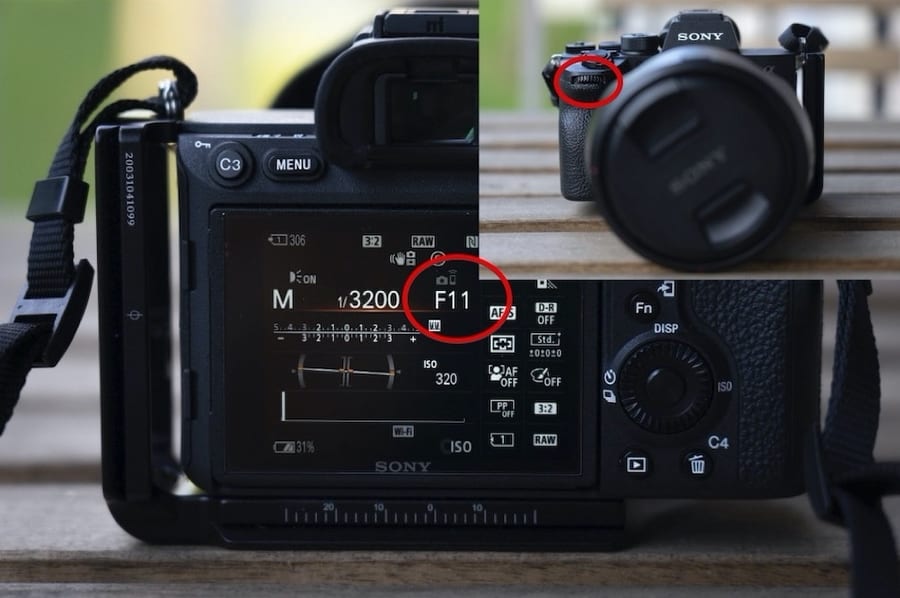Photography is a diverse art form, and each style requires different techniques and settings to capture the perfect shot. Whether you’re shooting portraits, landscapes, action shots, or low-light scenes, understanding the best camera settings for each style is essential to getting the most out of your camera. In this article, we’ll explore the best camera settings for a range of popular photography styles and help you understand how to optimize your camera for each situation.
1. Portrait Photography
Portrait photography focuses on capturing the personality and mood of a subject, often in a close-up or mid-range shot. For stunning portraits, you need to control depth of field, lighting, and focus to highlight the subject.
Best Camera Settings for Portrait Photography:
- Aperture (f-stop): Use a wide aperture (f/1.4 to f/2.8) to create a shallow depth of field. This will blur the background (bokeh), allowing the subject to stand out sharply against a soft backdrop.
- Shutter Speed: Aim for a shutter speed of at least 1/125s to avoid motion blur, especially if the subject is moving slightly. If shooting with studio lighting, you can go slower, but for natural light, keep it fast enough to freeze any movement.
- ISO: Keep your ISO low (100-400) to minimize noise and grain. If you’re shooting indoors with limited light, you may need to increase the ISO to 800 or 1600.
- Focus Mode: Use single-point autofocus and focus on the eyes, as they are the most important feature in portraits.
Additional Tips:
- Lighting: Soft lighting is essential in portrait photography. Use a diffuser or shoot during the golden hour for flattering natural light.
- Lens: A 50mm f/1.8 or an 85mm f/1.4 lens is ideal for portraits as it provides a natural perspective and excellent bokeh.
2. Landscape Photography
Landscape photography is about capturing the vast beauty of nature, from mountains and oceans to forests and deserts. The goal is to ensure that the entire scene is in sharp focus while showcasing the details of the environment.
Best Camera Settings for Landscape Photography:
- Aperture (f-stop): Use a small aperture (f/8 to f/16) for a deep depth of field, ensuring that both the foreground and background are sharp.
- Shutter Speed: Use a slower shutter speed (1/30s to 1/125s), especially when shooting landscapes during golden hour. If you’re shooting moving elements like water or clouds, you might want to experiment with longer exposures to create a sense of motion.
- ISO: Keep the ISO as low as possible (ISO 100) to maintain the highest image quality and reduce noise.
- Focus Mode: Use manual focus or set your focus on the hyperfocal distance to get everything from foreground to background in focus.
Additional Tips:
- Tripod: A tripod is crucial for landscape photography, especially when using slower shutter speeds. This will keep your camera steady and prevent any blur.
- Use a Polarizer: A polarizer filter helps enhance the color and contrast of the sky and water, as well as reduce reflections.
3. Action or Sports Photography
Action photography captures fast-moving subjects, such as athletes, wildlife, or any scene involving quick motion. To freeze the action and avoid motion blur, you need quick shutter speeds and precise autofocus settings.
Best Camera Settings for Action Photography:
- Aperture (f-stop): A medium aperture (f/4 to f/5.6) is ideal to get enough light for fast shutter speeds while still maintaining some depth of field to keep the subject sharp.
- Shutter Speed: Use a fast shutter speed (1/1000s or faster) to freeze the action. If you’re tracking a fast-moving subject, you may need an even faster shutter speed.
- ISO: Keep the ISO as low as possible while maintaining a fast shutter speed. You may need to increase ISO (800 or higher) in low-light conditions.
- Focus Mode: Use continuous autofocus (AI-Servo or AF-C) to track moving subjects. Set your focus point to be on the subject’s location for best results.
Additional Tips:
- Burst Mode: Use burst (continuous shooting) mode to capture multiple frames per second. This ensures that you don’t miss the perfect moment.
- Lens: A telephoto lens (70-200mm) is commonly used for action shots, allowing you to get close to the subject from a distance.
4. Macro Photography
Macro photography is the art of capturing tiny subjects, like flowers, insects, or everyday objects, in extreme detail. The focus is on getting the highest level of detail and sharpness, while also managing shallow depth of field due to the close working distance.
Best Camera Settings for Macro Photography:
- Aperture (f-stop): Use a smaller aperture (f/8 to f/16) to get as much detail in focus as possible. Be aware that with macro photography, the depth of field becomes very shallow, so a smaller aperture will help keep more of the subject sharp.
- Shutter Speed: Use a faster shutter speed (1/250s to 1/500s) to avoid camera shake and capture crisp details. Macro photography often requires precise focus, so minimizing movement is key.
- ISO: Start with ISO 100 to keep your image as clean as possible. Increase ISO in low light, but be mindful of noise.
- Focus Mode: Use manual focus to ensure the sharpest possible focus on the subject. Autofocus may struggle in macro settings due to the close distance to the subject.
Additional Tips:
- Use a Tripod: A tripod is essential for macro photography, especially when working with small apertures and slower shutter speeds.
- Use a Remote Shutter Release: To avoid camera shake, use a remote shutter release or your camera’s timer function to trigger the shot.
5. Low-Light or Night Photography
Capturing scenes in low-light conditions, such as at night or in dim environments, can be challenging, but the right settings will help you achieve sharp, well-exposed images.
Best Camera Settings for Low-Light Photography:
- Aperture (f-stop): Use a wide aperture (f/2.8 or wider) to allow as much light into the lens as possible.
- Shutter Speed: Use a slower shutter speed (1/30s to several seconds) to allow more light to hit the sensor. For very low light, a longer exposure is often necessary, but use a tripod to avoid camera shake.
- ISO: Increase the ISO (800 to 3200 or higher) to capture more light. However, be careful not to go too high, as this may introduce noise.
- Focus Mode: In low-light settings, autofocus may struggle. Switch to manual focus to ensure the sharpest possible image.
Additional Tips:
- Use a Tripod: A tripod is essential for long exposures to prevent camera shake.
- Shoot in RAW: Shooting in RAW format allows you to make adjustments to exposure and noise in post-processing.
6. Architectural Photography
Architectural photography involves capturing the beauty and design of buildings and structures. Precision and control over distortion, sharpness, and lighting are key for this style.
Best Camera Settings for Architectural Photography:
- Aperture (f-stop): Use a medium aperture (f/8 to f/11) to ensure a deep depth of field, so both the foreground and background are in focus.
- Shutter Speed: A faster shutter speed (1/250s to 1/500s) is generally sufficient, but in controlled lighting environments, you can use slower speeds for more depth.
- ISO: Use a low ISO (100-400) to maintain image quality and avoid noise.
- Focus Mode: Use manual focus to ensure the sharpest results and avoid focusing on unwanted areas.
Additional Tips:
- Use a Tilt-Shift Lens: A tilt-shift lens helps correct perspective distortion, which can make architectural lines appear straight instead of slanted.
- Shoot During the Golden Hour: Natural light during the golden hour provides a softer, more flattering glow that highlights architectural features.
Conclusion
The best camera settings for any photography style depend on the specific conditions and the look you are aiming for. From portraits to action shots, landscapes, and macro photography, knowing how to adjust your camera’s settings is essential to capturing stunning images. Whether you’re experimenting with a wide aperture, tracking fast-moving subjects, or focusing on minute details, mastering these settings will help you achieve better results in every genre of photography. So grab your camera, choose your style, and start experimenting with these settings to capture incredible shots.

